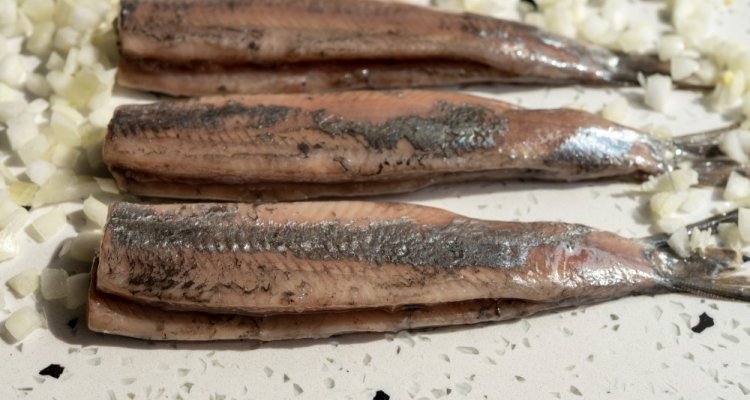
News
Fisheries affected by corona crisis
The Dutch cutter sector closed 2019 with an estimated 13 to 20 million euros in profit, a much lower result than the 48 million recorded in 2018. A strongly reduced yield, 234 million euros in 2019, compared to 305 million in 2018, is the primary cause for the lower results.
It is clear that the corona crisis has not left the fisheries sector unaffected. The price of various types of fish plummeted due to the closure of the catering businesses, and the reduced shrimp peeling capacity in Morocco called for a far-reaching reduction in supply and deployment.
Major developments in the near future are likely to have an even greater impact on the sector. In the North Sea agreement, that fishers refused to sign earlier this year, the division of the North Sea has been laid down. Due to the huge scaling up of wind at sea and the related claims on space by nature organisations, much fishing ground will be lost. Moreover, the prohibition of pulse fishing and imminent Brexit, as well as the strongly declining plaice and sole yield lead to significant insecurities over the future.
Cutter sector faces reduced yields
The total supply of the cutter sector dropped by 20 per cent in 2019 compared to 2018, to approximately 64 million kg. The shrimp supply at a 43 per cent decline is the main cause of this negative impact. Because the cooling houses retained sufficient stock from the record yields in 2018, the price of shrimps dropped to just 2.90 euros per kg (live weight). This decline in both supply and price caused an estimated loss of 6 million euros for the shrimp sector. The supply restrictions the sector itself enforced in 2019 have been extended in 2020 due to the corona crisis. The corona mitigating measures in the peeling industry in Morocco have severy reduced the peeling capacity. There are strong indications that the year 2020 will also be a rough year for the shrimp sector.
The supply of sole dropped with a staggering 22 per cent to 6.7 million kilos, and 3.1 million fewer kilos of plaice were caught, a 13% drop. Only 45 per cent of the plaice quotum was used, and only 63% of the sole quotum. The price of plaice dropped from 2.43 euros per kilo to 2.38 euros per kilo, while the price of sole increased from 11.15 euros per kilo to 11.33 euros per kilo.
The sum of fuel costs for the Dutch cutter fleet amounted to approximately 51 million euros in 2019, equalling 22% of the total revenues. The ban on pulse fishing is expected to result in the use of fishing methods that are more fuel-consuming, which will cause an increase in the fleet’s fuel consumption. For large beam trawlers, this may mean an increase of over 75%.
Mussel sector still in dire straits
In the season 2019/2020, the supply of mussels was the lowest recorded in the past decade, with only 33 million kilos, one third lower than previous seasons. The average price of mussels rose with 17% to 1.28 euros per kilo, but the increased price could only partly compensate for the lower yield. The total value of the mussel yield dropped with over 20% to 42 million euros, the lowest level in two decades.
Contrary to last year, mussels from Zeeland were more expensive this year (1.40 euros) than those from the Wad (1.04 euros), due to the decreased growth on the Wad.
Recent years have been financially difficult for many mussel farmers. The slightly increased production in 2018-2019 (+12%) and stable prices made this a better year with a 9 million euro net result. However, this profit partly resulted from postponing expenses such as maintenance.
Expectations for the 2019/2020 season are poor, as the lower yield on the Wad and mortality in the Oosterschelde reduced the total value of the mussel production by 20%. The poor economic results have recently led to an increase in takeovers and mergers in the sector.
Corona halts increased demand for fish in 2019
The foreign demand for Dutch seafood products has been on the rise for years. The export value of the Dutch businesses grew by 5% in 2019 (compared to 2018) to approximately 4 billion euros. This includes the renewed export of imported and processed products. The EU is the most important market, responsible for 75% of the total export in euros.
Salmon and cod were the most sold products. Almost the entire volume of these two types of fish is imported and processed in the Netherlands. In terms of volume, these fish have surpassed the export of plaice.
The global market is not expected to recover to its pre-corona volume of demand next year. Dutch fish processing and wholesale businesses have attempted to compensate for the loss of demand and loss of income by using alternative sales approaches. Since the corona pandemic also has a negative impact on the labour market (and thus, incomes), tourism and exchange rates, the expenditures on seafood products is expected to drop temporarily.